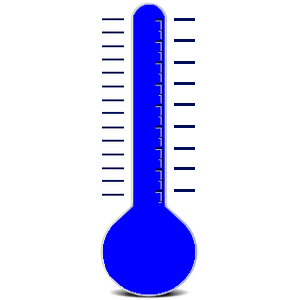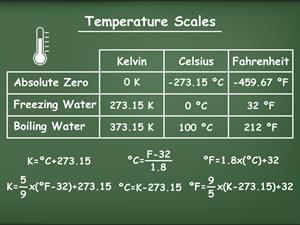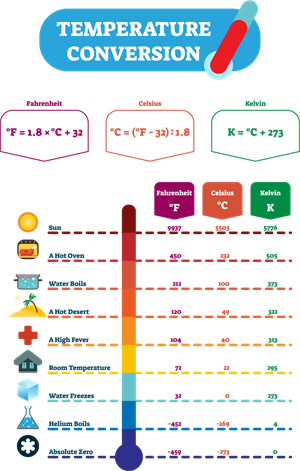PDF chapter test TRY NOW
Hot and Cold objects:
In our daily life, we may come across many objects which are hot or cold.
How do we say which object is hotter or cooler than the other?
In many cases, we use our fingertip to find that whether an object is hotter or cooler than the others.
But actually, it is not correct.
We can measure it with the help of thermometer.
In our daily life, we may come across many objects which are hot or cold.
How do we say which object is hotter or cooler than the other?
In many cases, we use our fingertip to find that whether an object is hotter or cooler than the others.
But actually, it is not correct.
We can measure it with the help of thermometer.

Fig. - Thermometer icon
TemperatureSI unit of temperature is Kelvin. Celsius and Fahrenheit are the other units used for calculating the temperature. Celsius is also known as Centigrade.
The measurement of the hotness or coldness of a substance is known as its Temperature. It determines the direction of the flow of heat when two bodies are placed in contact.

Fig. - Measuring Temperature
Temperature Scales:
Temperature is measured through thermometers according to well-defined scales of measurement, which use pre-defined reference points to help compare quantities.
Kelvin, Celsius, and Fahrenheit scales are the three most common temperature scales used.
Kelvin, Celsius, and Fahrenheit scales are the three most common temperature scales used.
A temperature scale is formulated by identifying two easily reproducible temperatures. The freezing and boiling temperatures of water at standard atmospheric pressure are commonly used here.
The Kelvin scale is the temperature scale that is commonly used in science. It is an absolute temperature scale defined to have 0 K at the lowest possible temperature, called absolute zero. The official temperature unit on this scale is the kelvin, which is abbreviated as K.
The Celsius scale (which replaced the slightly different centigrade scale) has the freezing point of water at 0ºC and the boiling point at 100ºC. The unit of Celsius scale is degree Celsius (ºC).
For the Fahrenheit scale (still, the most frequently used in the United States), the freezing point of water is at 32ºF, and the boiling point is at 212ºF. The unit of temperature on this scale is degree Fahrenheit (ºF).

Fig. - Temperature scales
Temperature Conversion:
The relationships between the three common temperature scales are shown below figure. Temperatures on these three scales can be converted using the equations,

Fig. - Temperature conversion

Fig. - Temperature conversion
Reference:
Image credit:
https://commons.wikimedia.org/wiki/File:Thermometer_B.jpg
https://pixabay.com/vectors/influenza-flu-fever-grippe-cold-156098/
https://pixabay.com/vectors/influenza-flu-fever-grippe-cold-156098/
